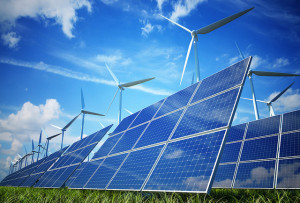New Environmental Protection Legislation is Good for Maryland’s Economy
Over the last few years, residents of the Curtis Bay community in Baltimore – the most polluted ZIP code in Maryland and one of the 100 most polluted in the country – have been trying to convince an energy company that a solar farm would be better for their community than a proposed trash incinerator.

Image by Tafe Sa Tonsley via Creative Commons license
Legislation passed in the General Assembly this year could provide an added incentive to increase solar energy production in Maryland.
Maryland is now poised to join the states leading the fight against the effects of climate change. These actions can reduce the damaging effects of air pollution and create more jobs in growing industries like solar.
As a coastal state, Maryland residents and the state’s economy are at even greater risk of harm from sea-level rise and other effects of climate change than other areas of the country. In fact, Dorchester County is on track to lose more than half its landmass to rising water by the end of the century.
If we don’t act, scientists say Maryland can expect to see increasing costs from damage to our roads and other infrastructure, significant harm to our agriculture and tourism industries, and a rise in health care costs as more people experience asthma and other conditions linked to air pollution. In addition to affecting people’s lives, this means real costs to the state and our economy.
The General Assembly passed two major climate protection bills this session. One aims to further reduce greenhouse gas emissions in the state, setting a target at 40 percent below 2006 levels over the next 15 years. Only New York and California have set stronger targets. Governor Hogan has signed this new law, which is expected to create or protect about 30,000 jobs.
Another bill still on the governor’s desk would require the state’s energy companies to supply 25 percent of their electricity from cleaner sources by 2020, a higher goal and more accelerated timeline than the current goal. It also slightly increases the share of renewable energy that must come from solar, which is expected to generate about 1,000 new jobs in the solar industry – giving the bill its name, the “Clean Energy Jobs Act.” The bill also makes small minority- and women-owned businesses in Maryland eligible to receive dedicated funding to get a foothold in this growing industry.
Governor Hogan should take this important step for the state’s economy, environment, and communities like Curtis Bay and sign the Clean Energy Jobs Act into law.
